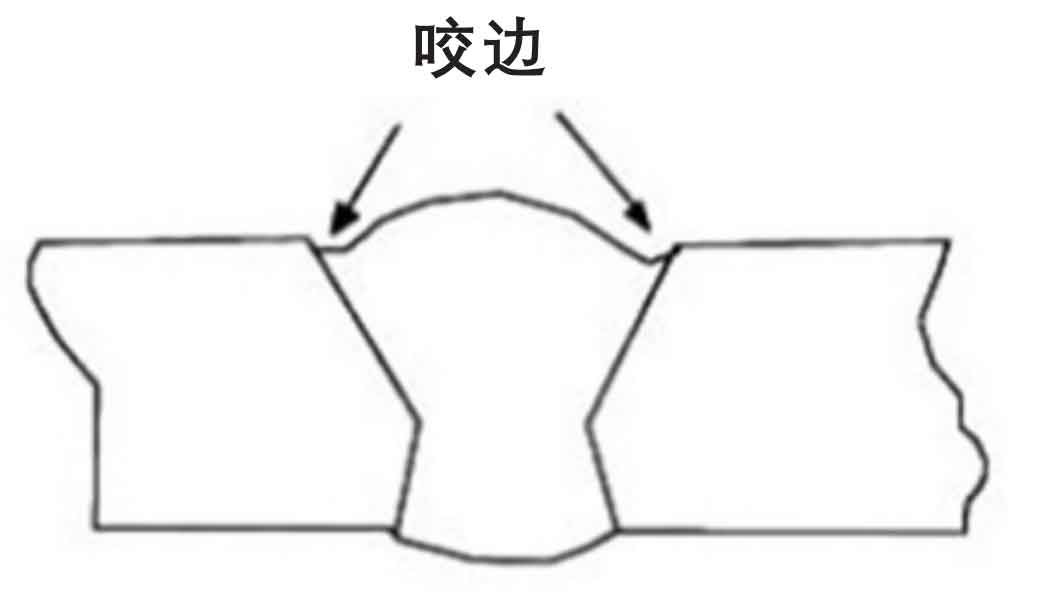Your Full Manual to Preventing Weld Undercut Like a Pro
Your Full Manual to Preventing Weld Undercut Like a Pro
Blog Article
Comprehending the Causes and Solutions for Undercut Welding in Metal Fabrication Procedures
In the realm of steel manufacture processes, the event of undercut welding positions a considerable difficulty that requires a detailed understanding of its reasons and feasible options. The complex interplay of different elements during welding operations can lead to this undesirable sensation, influencing the architectural stability and general high quality of the welded joints - Preventing weld undercut. By exploring the source of undercut welding and discovering reliable restorative steps, fabricators can elevate the criterion of their craftsmanship and make certain the manufacturing of perfect metal parts
Typical Root Causes Of Undercut Welding
Frequently forgotten in steel construction, undercut welding occurs as a result of numerous elements that demand thorough interest and competence to be efficiently mitigated. One usual root cause of undercut welding is too much warm input. When the heat input is too expensive, it can cause the melting and subsequent disintegration of the base material along the sides of the weld joint, creating a groove or undercut. In addition, incorrect welding techniques, such as utilizing the wrong welding angle or take a trip speed, can likewise contribute to damage development. Insufficient securing gas protection is an additional crucial factor that can lead to undercutting. Inadequate gas insurance coverage stops working to shield the weld pool adequately, causing oxidation and undercut defects. The option of welding parameters, such as voltage, present, and cable feed rate, plays a considerable duty in the event of undercut welding. Understanding these typical reasons is crucial for carrying out safety nets and making sure top quality welds in metal manufacture procedures.
Influence of Incorrect Welding Parameters
Imprecise welding parameters can substantially endanger the integrity and high quality of bonded joints in steel fabrication procedures. The impact of inaccurate welding specifications shows up in various methods, leading to architectural weak points and issues in the welded components. Careful focus to welding parameters is critical to make sure the manufacturing of high-quality welds with the desired mechanical homes and architectural honesty.
Result of Improper Lantern Angle
Improper torch angle in welding operations can substantially affect the top quality and honesty of the last weld joints in steel manufacture procedures. The lantern angle plays a critical role in figuring out the warm input and distribution during welding. When the torch angle is incorrect, issues such as undercutting can arise. Damaging is an usual welding issue where a groove develops along the weld toe, weakening the joint and endangering its architectural honesty.
A lantern angle that is too high can lead to insufficient penetration, insufficient blend, and increased spatter. On the various other hand, a lantern angle that is too superficial can cause extreme penetration, burn-through, and distortion of the base product. Preventing weld undercut. Appropriate torch angle is important for ensuring regular weld high quality, strength, and look
To stop damaging and other issues triggered by incorrect torch angles, welders have to be trained to maintain the right torch angle throughout the welding procedure. Regular tracking and adjustment of lantern angles during welding can aid accomplish audio welds with very little defects.
Function of Inadequate Welding Techniques

Another aspect of poor welding strategies is inappropriate weld prep work. Insufficient cleaning of the base metals, incorrect joint design, or insufficient side prep work can all add to undercut welding. Furthermore, inadequate shielding gas insurance coverage or making use of the incorrect kind of gas can result in incomplete blend and the development of undercut problems.
To resolve the duty of insufficient welding techniques in steel construction processes, it is vital to provide thorough training for welders. Appropriate education on welding criteria, joint preparation, and securing gas choice can help prevent undercut welding and make sure premium welds in metal manufacture jobs.
Reliable Solutions for Undercut Welding
Attending to undercut welding in metal construction requires applying effective remedies to improve weld top quality and architectural integrity. Among the primary options to combat undercut is to change welding parameters such as voltage, existing, and travel rate to ensure appropriate warmth input and combination. By fine-tuning these settings, welders can prevent too much melting of the base steel and filler material, minimizing the likelihood Source of undercut development.
Additionally, correct joint prep work is crucial in avoiding undercut. Guaranteeing tidy base metal surface areas without contaminants and making use of the suitable bevel angle can aid promote much better weld infiltration and lower the risk of undercut - Preventing weld undercut. Utilizing ideal welding strategies, such as weaving or oscillating the torch, can additionally assist in distributing warmth evenly and filling the weld joint appropriately, minimizing the possibility of undercut problems
In addition, picking the correct welding consumables, including electrodes and filler metals, is vital in alleviating undercut. Making use of products with proper chemical structures and mechanical properties can contribute to achieving sound welds with minimal undercut. Regular evaluation and high quality control steps ought to likewise be executed to discover and attend to undercut problems without delay, ensuring the total honesty of made steel elements.

Final Thought
To conclude, understanding the causes and solutions for undercut welding in steel manufacture procedures is vital for attaining high-grade welds. By resolving typical causes such as inaccurate welding specifications, improper lantern angle, and poor welding methods, welders can avoid undercutting and make certain solid, resilient welds. It is vital to pay attention to these factors and apply efficient solutions to boost the general welding process and last product quality.

Report this page